18 nov 2014
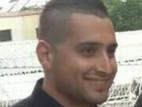
Israel Police Master Sergeant Zidan Seif, 30
30-year-old Master Sergeant Zidan Sif was wounded in a fire exchange with the two terrorists; officer who shot terrorists recounts the wrenching details of the sordid event: 'It was me or them
A policeman who was critically wounded Tuesday morning in a terror attack at a Jerusalem synagogue in Har Nof succumbed to his wounds Tuesday night at the Hadassah Medical Center in the capital, raising the number of casualties in the attack to five.
Master Sergeant Zidan Sif, age 30 from Yanuh-Jat, joined the Israel Police in April 2011 and served as a traffic control inspector at the Jerusalem Police Department. He was one of the first two policemen to arrive at the scene and was shot in a fire exchange with the two terrorists. He was posthumously promoted to First Sergeant.
Sif left behind a wife, a four-months-old baby, parents and five siblings. His funeral will be held Wednesday in the Arab local council of Yanuh-Jat.
Four others worshipers who were praying at the Kehilat Bnei Torah synagogue - Rabbi Moshe Twersky, Rabbi Avraham Shmuel Goldberg, Rabbi Kalman Levine, and Aryeh Kupinsky - were killed, while six people were wounded, including another police officer.
'It was me or them'
At around 7am, the terrorists - wielding massive knives and a gun - entered the Bnei Torah synagogue on Harav Shimon Agasi Street, which includes both a synagogue and yeshiva (rabbinical seminary), and carried out attacks in more than one location. The two were killed following a gunfight with security forces who arrived at the scene.
"It was clear to me that if I stood outside at that point they would murder Jews inside the Yeshiva," said Superintendent A., the man who eliminated the terrorists behind the deadly Jerusalem synagogue terror attack on Tuesday morning. "It was me or them," A. said.
Traffic police were the first to arrive at the scene of the terror attack – 7 minutes after the first report of a shooting at the synagogue.
Superintendent A., who serves as a Forensic Laboratory Specialist in the Division of Identification and Forensic Science (DIFS), overheard reports of the incident on police communications and understood there was an officer wounded from the shooting. "It was absolutely clear to me that this was an unusual event," said the superintendent. Seconds later the superintendent saw the two terrorists yielding guns and knives and running from the synagogue towards police.
A. shot at the two terrorists and killed them. After their elimination, A. along with other police officers entered the synagogue and screened the site in order to determine if there were additional terrorists. "It started like a regular day," said A. "I drove to work with my colleague. We are Superintendent Laboratory Specialists in the Division of Identification and Forensic Science, and are used to arrive at the "after" scene.
"We were listening to communications, and heard the center report on many calls regarding a shooting on Agassi Street. The first situation that came to my mind was 'Merkaz HaRav' (a previous Jerusalem terror attack)," said A. "We arrived there as quickly as possible because it was clear to us that we are first of all policemen and only afterwards are we forensics officials,"
A. continued. A. and the police officer that accompanied him saw two police officers on one side of the stairs at the entrance to the synagogue and another officer on the other side of the entrance. "I asked the police officer, 'what happened?' and then I heard a shot fired, and we stayed close to the wall. I looked up, I saw that there were windows; we were scared we would get shot at through the windows," said A. "We sought shelter behind a car and we continued to hear shots fired. I started narrowing in. At the entrance, a police officer standing next to me got shot in his foot and fell to the ground. I realized I was at gun range. I was very, very focused," A. said. A. continued to relay the events leading up to the killing of the two terrorists:
"I aimed my gun while shooting towards the stairs, I saw two, two young men running, and they were pretty young. The first held a gun and a big meat cleaver knife and the second a meter's distance behind him holding a Machete with a knife that was also covered in blood. It was me or them. I shot at the first, I saw that he collapsed, shot at the second, and then he collapsed. I continued to fire. I realized I had no more ammunition."
At the end of his retelling of the event A. said, "I turned to my colleague, and I asked him for his cartridge. I switched cartridges. At that point, an officer in front of me got closer to the stairs. There were two other officers and policemen on my right side. We started to go up the stairway because the instinctive thought that comes to mind is that there are more terrorists inside and we must stop them. We went up the stairs and I saw a Haredi covered in blood. We went inside, I checked the stair hall with the suspicion that a terrorist would come out. My inner thoughts were that if a terrorist comes out of there it is me or him. One look inside and I saw lots and lots of blood. Haredis lying on the ground. Massacre.
And basically this is when my role in the incident ended." Magen David Adom released the recordings of the call made by an eye-witness to the Jerusalem synagogue massacre. Woman: "I saw shots fired, there were two terrorists. I ran away from there immediately, I saw blood." Woman: "In Har, Nof Agassi Street, Arabs, shots." Operator: "You said shots?" Woman: "Yes, I saw shots, there were two terrorists there. I saw that there were injured." Operator: "How many injured did you see?" Woman: "I didn't see, I ran away immediately, I saw blood, there were a lot of shots there." Palestinian sources named the terrorists as cousins Ghassan and Uday Abu-Jamal, from the Jabel Mukaber neighborhood of East Jerusalem. The two were related to a prisoner released in the Gilad Shalit prisoner exchange.
An official Hamas statement said that the attack was a response to the death of bus driver Yusuf Hassan al-Ramouni, who was found hanged at a Jerusalem bus terminal Sunday night. An autopsy report confirmed the death was a suicide.
30-year-old Master Sergeant Zidan Sif was wounded in a fire exchange with the two terrorists; officer who shot terrorists recounts the wrenching details of the sordid event: 'It was me or them
A policeman who was critically wounded Tuesday morning in a terror attack at a Jerusalem synagogue in Har Nof succumbed to his wounds Tuesday night at the Hadassah Medical Center in the capital, raising the number of casualties in the attack to five.
Master Sergeant Zidan Sif, age 30 from Yanuh-Jat, joined the Israel Police in April 2011 and served as a traffic control inspector at the Jerusalem Police Department. He was one of the first two policemen to arrive at the scene and was shot in a fire exchange with the two terrorists. He was posthumously promoted to First Sergeant.
Sif left behind a wife, a four-months-old baby, parents and five siblings. His funeral will be held Wednesday in the Arab local council of Yanuh-Jat.
Four others worshipers who were praying at the Kehilat Bnei Torah synagogue - Rabbi Moshe Twersky, Rabbi Avraham Shmuel Goldberg, Rabbi Kalman Levine, and Aryeh Kupinsky - were killed, while six people were wounded, including another police officer.
'It was me or them'
At around 7am, the terrorists - wielding massive knives and a gun - entered the Bnei Torah synagogue on Harav Shimon Agasi Street, which includes both a synagogue and yeshiva (rabbinical seminary), and carried out attacks in more than one location. The two were killed following a gunfight with security forces who arrived at the scene.
"It was clear to me that if I stood outside at that point they would murder Jews inside the Yeshiva," said Superintendent A., the man who eliminated the terrorists behind the deadly Jerusalem synagogue terror attack on Tuesday morning. "It was me or them," A. said.
Traffic police were the first to arrive at the scene of the terror attack – 7 minutes after the first report of a shooting at the synagogue.
Superintendent A., who serves as a Forensic Laboratory Specialist in the Division of Identification and Forensic Science (DIFS), overheard reports of the incident on police communications and understood there was an officer wounded from the shooting. "It was absolutely clear to me that this was an unusual event," said the superintendent. Seconds later the superintendent saw the two terrorists yielding guns and knives and running from the synagogue towards police.
A. shot at the two terrorists and killed them. After their elimination, A. along with other police officers entered the synagogue and screened the site in order to determine if there were additional terrorists. "It started like a regular day," said A. "I drove to work with my colleague. We are Superintendent Laboratory Specialists in the Division of Identification and Forensic Science, and are used to arrive at the "after" scene.
"We were listening to communications, and heard the center report on many calls regarding a shooting on Agassi Street. The first situation that came to my mind was 'Merkaz HaRav' (a previous Jerusalem terror attack)," said A. "We arrived there as quickly as possible because it was clear to us that we are first of all policemen and only afterwards are we forensics officials,"
A. continued. A. and the police officer that accompanied him saw two police officers on one side of the stairs at the entrance to the synagogue and another officer on the other side of the entrance. "I asked the police officer, 'what happened?' and then I heard a shot fired, and we stayed close to the wall. I looked up, I saw that there were windows; we were scared we would get shot at through the windows," said A. "We sought shelter behind a car and we continued to hear shots fired. I started narrowing in. At the entrance, a police officer standing next to me got shot in his foot and fell to the ground. I realized I was at gun range. I was very, very focused," A. said. A. continued to relay the events leading up to the killing of the two terrorists:
"I aimed my gun while shooting towards the stairs, I saw two, two young men running, and they were pretty young. The first held a gun and a big meat cleaver knife and the second a meter's distance behind him holding a Machete with a knife that was also covered in blood. It was me or them. I shot at the first, I saw that he collapsed, shot at the second, and then he collapsed. I continued to fire. I realized I had no more ammunition."
At the end of his retelling of the event A. said, "I turned to my colleague, and I asked him for his cartridge. I switched cartridges. At that point, an officer in front of me got closer to the stairs. There were two other officers and policemen on my right side. We started to go up the stairway because the instinctive thought that comes to mind is that there are more terrorists inside and we must stop them. We went up the stairs and I saw a Haredi covered in blood. We went inside, I checked the stair hall with the suspicion that a terrorist would come out. My inner thoughts were that if a terrorist comes out of there it is me or him. One look inside and I saw lots and lots of blood. Haredis lying on the ground. Massacre.
And basically this is when my role in the incident ended." Magen David Adom released the recordings of the call made by an eye-witness to the Jerusalem synagogue massacre. Woman: "I saw shots fired, there were two terrorists. I ran away from there immediately, I saw blood." Woman: "In Har, Nof Agassi Street, Arabs, shots." Operator: "You said shots?" Woman: "Yes, I saw shots, there were two terrorists there. I saw that there were injured." Operator: "How many injured did you see?" Woman: "I didn't see, I ran away immediately, I saw blood, there were a lot of shots there." Palestinian sources named the terrorists as cousins Ghassan and Uday Abu-Jamal, from the Jabel Mukaber neighborhood of East Jerusalem. The two were related to a prisoner released in the Gilad Shalit prisoner exchange.
An official Hamas statement said that the attack was a response to the death of bus driver Yusuf Hassan al-Ramouni, who was found hanged at a Jerusalem bus terminal Sunday night. An autopsy report confirmed the death was a suicide.
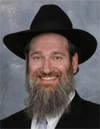
Rabbi Aryeh Kupinsky, 43 US
Israeli Prime Minister Binyamin Netanyahu told the media that his military forces would respond 'with a firm hand' to an attack by two Palestinians on a yeshiva (Jewish religious institution for study) in Jerusalem in which four religious Jews were killed. Another Israeli government official compared the attack to the Holocaust.
The two men allegedly entered the while prayers were in service with knives, axes and guns, and began attacking worshipers.
Israeli Prime Minister Binyamin Netanyahu told the media that his military forces would respond 'with a firm hand' to an attack by two Palestinians on a yeshiva (Jewish religious institution for study) in Jerusalem in which four religious Jews were killed. Another Israeli government official compared the attack to the Holocaust.
The two men allegedly entered the while prayers were in service with knives, axes and guns, and began attacking worshipers.

Rabbi Kalman Ze'ev Levine, 55 US
Israeli police soon arrived on the scene and, after a brief shootout, killed the two men.
Six people were wounded in the attack, including two police officers, according to police spokesperson Luba Samri.
The two men who carried out the attack were identified as Ghassan Abu Jamal and his cousin Udayy from Jabal al-Mukabbir neighborhood of Jerusalem.
Israeli police soon arrived on the scene and, after a brief shootout, killed the two men.
Six people were wounded in the attack, including two police officers, according to police spokesperson Luba Samri.
The two men who carried out the attack were identified as Ghassan Abu Jamal and his cousin Udayy from Jabal al-Mukabbir neighborhood of Jerusalem.
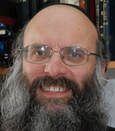
Rabbi Moshe Twersky, 59 US
The institution that was attacked, Kehillet Bnei Torah, is known as a haredi (ultra-Orthodox) institute whose participants are followers of Rabbi Shmuel Auerbach. Auerbach gained infamy in early 2014 throughout Israel when he declared that his followers would “fight to the death” against the Israeli government if the government attempted to enforce the military draft on yeshiva students.
The institution that was attacked, Kehillet Bnei Torah, is known as a haredi (ultra-Orthodox) institute whose participants are followers of Rabbi Shmuel Auerbach. Auerbach gained infamy in early 2014 throughout Israel when he declared that his followers would “fight to the death” against the Israeli government if the government attempted to enforce the military draft on yeshiva students.
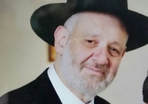
Rabbi Avraham Shmuel Goldberg, 68 UK
The attack on the religious institution follows months of attacks by right-wing Israeli Jews against Palestinians which went largely uninvestigated by the Israeli police. These include the brutal murder of 16-year old Mohammad Abu Khdeir in June, who was forced to swallow kerosene and then burned alive, according to autopsy reports. The killers were identified and charged, but were released from jail within two weeks of their arrest.
That incident was followed by dozens of others, carried out by Israeli civilians and soldiers throughout the West Bank and East Jerusalem, reaching a peak during the brutal Israeli military assault in July and August in which over 2100 Palestinians were killed, including over 400 children.
Most recently, on Sunday a Palestinian bus driver was hanged to death inside his bus – despite his body being covered with bruises, the Israeli police immediately ruled the death a suicide. Their ruling led to protests by Palestinians, who have no legal recourse in Israeli courts.
After Tuesday's shooting attack, Israeli Prime Minister blamed both Hamas and Mahmoud Abbas, the Palestinian President – whose Fateh party recently reached a unity agreement with Hamas. The two men involved in the attack did not claim affiliation with any Palestinian faction, but an alleged representative of Hamas praised the attack in Israeli media.
Large numbers of Israeli police were deployed into Palestinian neighborhoods in east Jerusalem following the attack. The police had already been deployed in many of these neighborhoods, where they have had an increased presence over the last several months.
Israeli official Yehuda Meshi Zahav told the Israeli paper Ha'aretz that, “...to see Jews with beards and pe’ot (sidelocks) wrapped in teffilin (phylacteries), surrounded by puddles of blood – I do not remember seeing such a sight. This is not a cliché, it’s the reality. We have only seen things like this happen in the Holocaust.”
The attack on the religious institution follows months of attacks by right-wing Israeli Jews against Palestinians which went largely uninvestigated by the Israeli police. These include the brutal murder of 16-year old Mohammad Abu Khdeir in June, who was forced to swallow kerosene and then burned alive, according to autopsy reports. The killers were identified and charged, but were released from jail within two weeks of their arrest.
That incident was followed by dozens of others, carried out by Israeli civilians and soldiers throughout the West Bank and East Jerusalem, reaching a peak during the brutal Israeli military assault in July and August in which over 2100 Palestinians were killed, including over 400 children.
Most recently, on Sunday a Palestinian bus driver was hanged to death inside his bus – despite his body being covered with bruises, the Israeli police immediately ruled the death a suicide. Their ruling led to protests by Palestinians, who have no legal recourse in Israeli courts.
After Tuesday's shooting attack, Israeli Prime Minister blamed both Hamas and Mahmoud Abbas, the Palestinian President – whose Fateh party recently reached a unity agreement with Hamas. The two men involved in the attack did not claim affiliation with any Palestinian faction, but an alleged representative of Hamas praised the attack in Israeli media.
Large numbers of Israeli police were deployed into Palestinian neighborhoods in east Jerusalem following the attack. The police had already been deployed in many of these neighborhoods, where they have had an increased presence over the last several months.
Israeli official Yehuda Meshi Zahav told the Israeli paper Ha'aretz that, “...to see Jews with beards and pe’ot (sidelocks) wrapped in teffilin (phylacteries), surrounded by puddles of blood – I do not remember seeing such a sight. This is not a cliché, it’s the reality. We have only seen things like this happen in the Holocaust.”
11 nov 2014
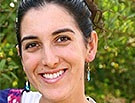
Dalia Lamkus, 25
Israeli sources confirmed Monday that a 25-yet-old settler woman and an Israeli army soldier have been killed in two separate stabbing attacks, in Tel Aviv and the West Bank, while at least two others were injured. A Palestinian man, allegedly the attacker was shot and killed.
Israeli daily Haaretz said Dalia Lamkus, 25, from the illegal settlement of Teqoua’, near Bethlehem, died on Monday evening after being stabbed by a Palestinian, while a young settler was moderately injured in his abdomen, and a 50-year-old man suffered a mild injury to the face.
Israeli sources confirmed Monday that a 25-yet-old settler woman and an Israeli army soldier have been killed in two separate stabbing attacks, in Tel Aviv and the West Bank, while at least two others were injured. A Palestinian man, allegedly the attacker was shot and killed.
Israeli daily Haaretz said Dalia Lamkus, 25, from the illegal settlement of Teqoua’, near Bethlehem, died on Monday evening after being stabbed by a Palestinian, while a young settler was moderately injured in his abdomen, and a 50-year-old man suffered a mild injury to the face.
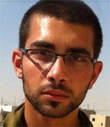
Sgt. Almog Shilony, 20
The incident took place, on Monday evening, near the Alon Shvot illegal Israeli settlement, in the Gush Etzion settlement bloc.
Israeli sources said that the attacker, later identified by the Israeli Internal Security Service as Maher Hamdi al-Hashlamoun, 31, is a former political prisoner, from Hebron, who was held by Israel for more than five years.
The Palestinian News & Info Agency (WAFA) said al-Hashlamoun was shot and killed by Israeli army fire, and by rounds fired by a guard of the Alon Shvot settlement.
On Monday evening, Israeli soldiers invaded several homes in Hebron, and kidnapped the brother of al-Hashlamoun, and his brother-in-law, in Ein Sara area in the center of the city.
Local sources said the soldiers invaded the home of al-Hashlamoun’s father, and ransacked it before kidnapping his brother, Mohammad, and invaded the home of his brother-in-law, Khaled an-Natsha, in the same area, and kidnapped him.
The soldiers also invaded and searched several homes belonging to relatives of al-Hashlamoun.
Medical sources in Hebron said dozens of residents suffered the effects of tear gas inhalation, and two were kidnapped by the soldiers, during clashes that took place in Hebron after the army invaded it.
In addition, soldiers clashed with dozens of Palestinians in Doura town, south of Hebron, and kidnapped a Palestinian identified as Hamza Ezzat Amro, 21.
Dozens of extremist Israeli settlers marched on a bypass road close to Gush Etzion settlement, and blocked Palestinian traffic while chanting “death to Arabs.”
The stabbing came just hours after an Israeli settler soldier, identified as Almog Shiloni, 20 years of age, from Modi’in illegal settlement (near Ramallah) was stabbed at a train station, south of Tel Aviv, and died of his wounds later on.
Israeli Ynet News said Sergeant Shiloni died of his wounds of Monday at night at the Tel HaShomer Israeli Medical Center.
Israel said the attacker has been identified as Noureddeen Abu Hashiyya, from Askar refugee camp, in the northern West Bank district of Nablus, and that he entered Israel without a permit.
Following the two incidents, Israeli Prime Minister Benjamin Netanyahu held a meeting with his senior security officials at his home in occupied Jerusalem, and ordered a series of measures “to combat the increasing violence.”
The meeting included Israeli Defense Minister Moshe Ya’alon, Israeli Army Chief of Staff Benny Gantz, Public Security Minister Yitzhak Aharonovich, Israeli Attorney General Yehuda Weinstein, and Shin Bet head Yoram Cohen.
He instructed the officials to increase the number of Israeli soldiers on the ground, and to demolish the homes of Palestinians responsible for attacks against Israel.
The latest development came amidst increasing tension and clashes in different parts of the country, mainly in occupied East Jerusalem, following escalated settlers attacks and invasions into the yards of the Al-Aqsa Mosque in Jerusalem.
The incident took place, on Monday evening, near the Alon Shvot illegal Israeli settlement, in the Gush Etzion settlement bloc.
Israeli sources said that the attacker, later identified by the Israeli Internal Security Service as Maher Hamdi al-Hashlamoun, 31, is a former political prisoner, from Hebron, who was held by Israel for more than five years.
The Palestinian News & Info Agency (WAFA) said al-Hashlamoun was shot and killed by Israeli army fire, and by rounds fired by a guard of the Alon Shvot settlement.
On Monday evening, Israeli soldiers invaded several homes in Hebron, and kidnapped the brother of al-Hashlamoun, and his brother-in-law, in Ein Sara area in the center of the city.
Local sources said the soldiers invaded the home of al-Hashlamoun’s father, and ransacked it before kidnapping his brother, Mohammad, and invaded the home of his brother-in-law, Khaled an-Natsha, in the same area, and kidnapped him.
The soldiers also invaded and searched several homes belonging to relatives of al-Hashlamoun.
Medical sources in Hebron said dozens of residents suffered the effects of tear gas inhalation, and two were kidnapped by the soldiers, during clashes that took place in Hebron after the army invaded it.
In addition, soldiers clashed with dozens of Palestinians in Doura town, south of Hebron, and kidnapped a Palestinian identified as Hamza Ezzat Amro, 21.
Dozens of extremist Israeli settlers marched on a bypass road close to Gush Etzion settlement, and blocked Palestinian traffic while chanting “death to Arabs.”
The stabbing came just hours after an Israeli settler soldier, identified as Almog Shiloni, 20 years of age, from Modi’in illegal settlement (near Ramallah) was stabbed at a train station, south of Tel Aviv, and died of his wounds later on.
Israeli Ynet News said Sergeant Shiloni died of his wounds of Monday at night at the Tel HaShomer Israeli Medical Center.
Israel said the attacker has been identified as Noureddeen Abu Hashiyya, from Askar refugee camp, in the northern West Bank district of Nablus, and that he entered Israel without a permit.
Following the two incidents, Israeli Prime Minister Benjamin Netanyahu held a meeting with his senior security officials at his home in occupied Jerusalem, and ordered a series of measures “to combat the increasing violence.”
The meeting included Israeli Defense Minister Moshe Ya’alon, Israeli Army Chief of Staff Benny Gantz, Public Security Minister Yitzhak Aharonovich, Israeli Attorney General Yehuda Weinstein, and Shin Bet head Yoram Cohen.
He instructed the officials to increase the number of Israeli soldiers on the ground, and to demolish the homes of Palestinians responsible for attacks against Israel.
The latest development came amidst increasing tension and clashes in different parts of the country, mainly in occupied East Jerusalem, following escalated settlers attacks and invasions into the yards of the Al-Aqsa Mosque in Jerusalem.
7 nov 2014

Shalom Aharon Badani, 17
Shalom Baadani, 17-year-old yeshiva student from Jerusalem, was hit when terrorist rammed his car into
An Israeli teen injured in Wednesday's vehicular terror attack in Jerusalem succumbed to his wounds Friday morning.
17-year-old yeshiva student Shalom Baadani from Jerusalem, the grandson of a senior Shas religious figure, lay in critical condition in the Hadassah Medical Center in Jerusalem's Ein Kerem since Wednesday with his identity unknown.
Baadani arrived at Haddasah after being wounded in the vehicular terror attack on Wednesday afternoon. Rescue personnel used a cellphone found at the scene of the attack to identify the patient, comparing images on the phone with the victim. Police then found his parents, who were summoned to the hospital and confirmed his identity.
His death brings the death toll of the terror attack to two - or three, if you include the attack's perpetrator Ibrahim Al-Akari, 38, who was killed while still rampaging in Jerusalem by an officer and four soldiers.
Al-Akari, a Palestinian from East Jerusalem, rammed his car into pedestrians near one of Jerusalem's Light Rail stations. Hamas claimed responsibility for the attack, which saw Akari plow down a group of Border Gaurd police officers, killing Chief inspector Jadan Assad, a Druze officer from Beit Jann, and then continue to the station, hitting additional pedestrians, only to continue his attack on foot with a metal rod.
Apparently, Baadani was riding a bicycle when he was hit by the terrorist. His parents never worried, because they knew he was supposed to return home late at night.
Baadani is the grandson of a member of the Shas Party's Council of Torah Sages, Rabbi Shimon Baadani. Among the hospital visitors was MK Eli Yishai.
Violence continues Nearly daily stone-throwing protests have erupted in East Jerusalem neighborhoods, and at a flashpoint holy site in Jerusalem housing Islam's third-holiest site, and which Jews revere as the place where biblical Jewish temples once stood.
Israeli police deployed extra forces on Friday to try and prevent further violence, also limiting access to worshippers by permitting only Muslim men older than 35 to enter the compound of the al-Aqsa mosque.
Palestinians accuse Israel of trying to change the delicate status quo at the site, citing visits by right-wing Israelis seeking prayer rights there.
Shalom Baadani, 17-year-old yeshiva student from Jerusalem, was hit when terrorist rammed his car into
An Israeli teen injured in Wednesday's vehicular terror attack in Jerusalem succumbed to his wounds Friday morning.
17-year-old yeshiva student Shalom Baadani from Jerusalem, the grandson of a senior Shas religious figure, lay in critical condition in the Hadassah Medical Center in Jerusalem's Ein Kerem since Wednesday with his identity unknown.
Baadani arrived at Haddasah after being wounded in the vehicular terror attack on Wednesday afternoon. Rescue personnel used a cellphone found at the scene of the attack to identify the patient, comparing images on the phone with the victim. Police then found his parents, who were summoned to the hospital and confirmed his identity.
His death brings the death toll of the terror attack to two - or three, if you include the attack's perpetrator Ibrahim Al-Akari, 38, who was killed while still rampaging in Jerusalem by an officer and four soldiers.
Al-Akari, a Palestinian from East Jerusalem, rammed his car into pedestrians near one of Jerusalem's Light Rail stations. Hamas claimed responsibility for the attack, which saw Akari plow down a group of Border Gaurd police officers, killing Chief inspector Jadan Assad, a Druze officer from Beit Jann, and then continue to the station, hitting additional pedestrians, only to continue his attack on foot with a metal rod.
Apparently, Baadani was riding a bicycle when he was hit by the terrorist. His parents never worried, because they knew he was supposed to return home late at night.
Baadani is the grandson of a member of the Shas Party's Council of Torah Sages, Rabbi Shimon Baadani. Among the hospital visitors was MK Eli Yishai.
Violence continues Nearly daily stone-throwing protests have erupted in East Jerusalem neighborhoods, and at a flashpoint holy site in Jerusalem housing Islam's third-holiest site, and which Jews revere as the place where biblical Jewish temples once stood.
Israeli police deployed extra forces on Friday to try and prevent further violence, also limiting access to worshippers by permitting only Muslim men older than 35 to enter the compound of the al-Aqsa mosque.
Palestinians accuse Israel of trying to change the delicate status quo at the site, citing visits by right-wing Israelis seeking prayer rights there.
5 nov 2014

Border Patrol Captain Chief Inspector Jidan Assad, 38
In what has been confirmed as a "deliberate attack," Israeli sources said an Israeli man was killed, and several others injured, when a Palestinian driver rammed them with his car in Sheikh Jarrah, in occupied East Jerusalem. The Palestinian man was later shot and killed by the Israeli Border Police.
Initial reports indicate that the driver first rammed a number of Israeli security officers while waiting at a crosswalk, then continued to the train stations and rammed a number of cars in the street.
Israeli Ynet News said the Palestinian then rammed a number of
pedestrians with his car, killing one and seriously wounding two others, while two more Israelis suffered moderate injuries.
He then hit several cars before stopping and exiting the vehicle reportedly carrying an iron bar before border police officers shot him dead.
The Arabs48 news website said the Palestinian driver has been identified as Ibrahim al-‘Akari, 38, from the Shu’fat refugee camp.
He is the brother of former political prisoners Mousa al-‘Akari who was exiled to Turkey as part of the Shalit Prisoner Swap deal, in October 18. 2011.
The brother, Mousa, is believed to have been a member of a Hamas group that killed an Israeli soldier after kidnapping him on December 13 1992. He was sentenced to three life terms.
The Arabs48 said the “Internal Israeli Security Service” insists that al-‘Akari should be buried at the “Numbers Graveyard” where many Palestinian and Arab fighters are buried in numbered, nameless, graves.
The Hamas movement officially claimed responsibility for the attack, and said Ibrahim al-Akari is one of its members, and that he carried out the attack in retaliation to Israel’s ongoing violations against the Palestinian people, and the constant attacks targeting the Al-Aqsa Mosque, and Jerusalem.
Hamas official Fawzi Barhoum said in a statement that the operation is “a natural response to the Israeli crimes, constant abuse and violations targeting Al-Aqsa and holy sites, in addition to the ongoing displacement of Palestinians from their occupied city, Jerusalem.
He called on the Palestinians in Jerusalem, the West Bank and the rest of Palestine to “conduct more attacks targeting the Israeli occupation and its settlers,” and “in defense of the Al-Aqsa Mosque, the blood of those who defend Al-Aqsa, and the legitimate Palestinian rights.”
Earlier on Wednesday, the Israeli army briefly closed the Al-Aqsa Mosque compound confrontations with dozens of Palestinians who clashed with Israeli extremists, and soldiers, invading the Mosque compound.
More On Recent Escalation, Clashes in Jerusalem, And Invasions Into The Mosque Compound
In what has been confirmed as a "deliberate attack," Israeli sources said an Israeli man was killed, and several others injured, when a Palestinian driver rammed them with his car in Sheikh Jarrah, in occupied East Jerusalem. The Palestinian man was later shot and killed by the Israeli Border Police.
Initial reports indicate that the driver first rammed a number of Israeli security officers while waiting at a crosswalk, then continued to the train stations and rammed a number of cars in the street.
Israeli Ynet News said the Palestinian then rammed a number of
pedestrians with his car, killing one and seriously wounding two others, while two more Israelis suffered moderate injuries.
He then hit several cars before stopping and exiting the vehicle reportedly carrying an iron bar before border police officers shot him dead.
The Arabs48 news website said the Palestinian driver has been identified as Ibrahim al-‘Akari, 38, from the Shu’fat refugee camp.
He is the brother of former political prisoners Mousa al-‘Akari who was exiled to Turkey as part of the Shalit Prisoner Swap deal, in October 18. 2011.
The brother, Mousa, is believed to have been a member of a Hamas group that killed an Israeli soldier after kidnapping him on December 13 1992. He was sentenced to three life terms.
The Arabs48 said the “Internal Israeli Security Service” insists that al-‘Akari should be buried at the “Numbers Graveyard” where many Palestinian and Arab fighters are buried in numbered, nameless, graves.
The Hamas movement officially claimed responsibility for the attack, and said Ibrahim al-Akari is one of its members, and that he carried out the attack in retaliation to Israel’s ongoing violations against the Palestinian people, and the constant attacks targeting the Al-Aqsa Mosque, and Jerusalem.
Hamas official Fawzi Barhoum said in a statement that the operation is “a natural response to the Israeli crimes, constant abuse and violations targeting Al-Aqsa and holy sites, in addition to the ongoing displacement of Palestinians from their occupied city, Jerusalem.
He called on the Palestinians in Jerusalem, the West Bank and the rest of Palestine to “conduct more attacks targeting the Israeli occupation and its settlers,” and “in defense of the Al-Aqsa Mosque, the blood of those who defend Al-Aqsa, and the legitimate Palestinian rights.”
Earlier on Wednesday, the Israeli army briefly closed the Al-Aqsa Mosque compound confrontations with dozens of Palestinians who clashed with Israeli extremists, and soldiers, invading the Mosque compound.
More On Recent Escalation, Clashes in Jerusalem, And Invasions Into The Mosque Compound
30 june 2014
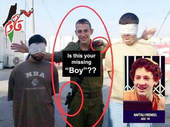
"student" Gilad Sha'er, 16
The Israeli army confirmed Monday evening that authorities have located the bodies of three Israeli teenagers abducted last month as they made their way home from their religious school in the West Bank. While few details were released on the exact fate of the three teens, security officials said the bodies of Naftali Fraenkel and Gilad Shaar, both 16, and Eyal Yifrach, 19, were found in an open area close to Hebron, in the West Bank.
The Israeli army confirmed Monday evening that authorities have located the bodies of three Israeli teenagers abducted last month as they made their way home from their religious school in the West Bank. While few details were released on the exact fate of the three teens, security officials said the bodies of Naftali Fraenkel and Gilad Shaar, both 16, and Eyal Yifrach, 19, were found in an open area close to Hebron, in the West Bank.

Naftali Frenkel, 16
Security officials said the bodies were found Monday near the village of Halhul, near the location where the teens disappeared, the Associated Press reported.
The Israeli army has carried out a wide-ranging search operation in the West Bank since the teens disappeared on June 12.
Security officials said the bodies were found Monday near the village of Halhul, near the location where the teens disappeared, the Associated Press reported.
The Israeli army has carried out a wide-ranging search operation in the West Bank since the teens disappeared on June 12.
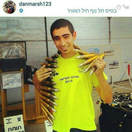
"student" in reality a soldier Eyal Yifrah, 19
As well as searching the area around Hebron where they disappeared, for the first time in nearly a decade Israeli forces entered numerous Palestinian towns and cities, arresting more than 400 Palestinians, mostly members of militant Islamist group Hamas, and killing five Palestinians in the process.
Israel has charged that Hamas, the Palestinian group that rules the Gaza Strip, was behind the kidnappings, an accusation that Hamas officials have denied. Israel and the United States consider Hamas a terrorist organization.
On Thursday, Israel released the names of two suspects it said carried out the kidnapping. Israel said both men are known Hamas operatives and both have been missing since the three Israeli youths disappeared.
On Sunday, Palestinians reported that the wife of one suspect, Marwan Kawasme, had been questioned by the Israeli military and that the father of the second suspect, Amer Abu Aisha, had been arrested.
Also on Sunday, thousands of Israelis joined the families of the three teens to rally for their safe return.
Israel’s security cabinet, headed by Prime Minister Benjamin Netanyahu, convened Monday night to discuss action following the discovery of the bodies. It was not immediately clear what the Israeli response would be.
Over the past two weeks there has been a sharp escalation in violence between Israel and militant groups, including Hamas, in the Gaza Strip.
Israeli military said in a statement Sunday that more than 50 rockets had been fired from Gaza into Israeli territory. In response, Israeli army jets have pounded targets in Gaza. One Hamas operative was confirmed dead Sunday.
In response to the increase in Israeli airstrikes, Hamas released its first official statement Monday, accusing Israel of escalation tensions.
“Netanyahu is trying to converse the realty, he should know that his threats do not scare Hamas. If he is willing to start a war in Gaza then the gates of hell will be open to him,” said the group in a statement.
Israeli Foreign Minister Avigdor Lieberman said Sunday that Israel should consider reoccupying the Gaza Strip in response to the recent rocket fire, the newspaper Haaretz reported.
“We need to decide whether we are going to choose the alternative, which is full occupation of the strip. We have seen that limited action only strengthens Hamas, and therefore the alternative is clear,” Lieberman said in an interview on Israel’s Army Radio, according to Haaretz.
Last week, Israel’s domestic security agency said the two Palestinians accused of carrying out the kidnappings are both operatives in Hamas. It said the two have been arrested previously for involvement in militant activities, including obtaining materials for explosives and recruiting other Hamas operatives.
Hamas has consistently denied direct involvement, although its leaders have vocally celebrated the teens’ abduction and called for more Israelis to be kidnapped. Hamas recently began working in a new unity government with the Palestinian leadership in the West Bank.
The kidnapping and the subsequent military operation have increased friction between Israelis and Palestinians, who just three months ago were in the midst of U.S-brokered peace negotiations.
While searching for the abducted teens, Israel has pursued a parallel military operation to weaken Hamas’s infrastructure in the West Bank, arresting hundreds of Palestinians, most of them affiliated with Hamas, and closing down Hamas civilian institutions, including student organizations in universities, charities and television stations.
Military experts, however, warned last week that continuing with the restrictions might create an even more volatile situation.
As well as searching the area around Hebron where they disappeared, for the first time in nearly a decade Israeli forces entered numerous Palestinian towns and cities, arresting more than 400 Palestinians, mostly members of militant Islamist group Hamas, and killing five Palestinians in the process.
Israel has charged that Hamas, the Palestinian group that rules the Gaza Strip, was behind the kidnappings, an accusation that Hamas officials have denied. Israel and the United States consider Hamas a terrorist organization.
On Thursday, Israel released the names of two suspects it said carried out the kidnapping. Israel said both men are known Hamas operatives and both have been missing since the three Israeli youths disappeared.
On Sunday, Palestinians reported that the wife of one suspect, Marwan Kawasme, had been questioned by the Israeli military and that the father of the second suspect, Amer Abu Aisha, had been arrested.
Also on Sunday, thousands of Israelis joined the families of the three teens to rally for their safe return.
Israel’s security cabinet, headed by Prime Minister Benjamin Netanyahu, convened Monday night to discuss action following the discovery of the bodies. It was not immediately clear what the Israeli response would be.
Over the past two weeks there has been a sharp escalation in violence between Israel and militant groups, including Hamas, in the Gaza Strip.
Israeli military said in a statement Sunday that more than 50 rockets had been fired from Gaza into Israeli territory. In response, Israeli army jets have pounded targets in Gaza. One Hamas operative was confirmed dead Sunday.
In response to the increase in Israeli airstrikes, Hamas released its first official statement Monday, accusing Israel of escalation tensions.
“Netanyahu is trying to converse the realty, he should know that his threats do not scare Hamas. If he is willing to start a war in Gaza then the gates of hell will be open to him,” said the group in a statement.
Israeli Foreign Minister Avigdor Lieberman said Sunday that Israel should consider reoccupying the Gaza Strip in response to the recent rocket fire, the newspaper Haaretz reported.
“We need to decide whether we are going to choose the alternative, which is full occupation of the strip. We have seen that limited action only strengthens Hamas, and therefore the alternative is clear,” Lieberman said in an interview on Israel’s Army Radio, according to Haaretz.
Last week, Israel’s domestic security agency said the two Palestinians accused of carrying out the kidnappings are both operatives in Hamas. It said the two have been arrested previously for involvement in militant activities, including obtaining materials for explosives and recruiting other Hamas operatives.
Hamas has consistently denied direct involvement, although its leaders have vocally celebrated the teens’ abduction and called for more Israelis to be kidnapped. Hamas recently began working in a new unity government with the Palestinian leadership in the West Bank.
The kidnapping and the subsequent military operation have increased friction between Israelis and Palestinians, who just three months ago were in the midst of U.S-brokered peace negotiations.
While searching for the abducted teens, Israel has pursued a parallel military operation to weaken Hamas’s infrastructure in the West Bank, arresting hundreds of Palestinians, most of them affiliated with Hamas, and closing down Hamas civilian institutions, including student organizations in universities, charities and television stations.
Military experts, however, warned last week that continuing with the restrictions might create an even more volatile situation.
14 apr 2014

Chief Superintendent Baruch Mizrahi, 47
Palestinian gunmen shot and killed one person and injured two others in a car driven by an Israeli settler in the occupied West Bank on Monday, Israel's military said.
The Palestinians shot at the car in Tarqumiyah near Hebron in the West Bank, killing one person and injuring two passengers, according to Israeli news reports.
The victims were in their vehicle at the time of the shooting.
A 40-year-old man, presumably the father, was pronounced dead, while the mother was in serious condition, and the child suffered only light injuries, Channel 2 reported.
Police said Israeli forces were searching the scene for suspects.
Palestinian gunmen shot and killed one person and injured two others in a car driven by an Israeli settler in the occupied West Bank on Monday, Israel's military said.
The Palestinians shot at the car in Tarqumiyah near Hebron in the West Bank, killing one person and injuring two passengers, according to Israeli news reports.
The victims were in their vehicle at the time of the shooting.
A 40-year-old man, presumably the father, was pronounced dead, while the mother was in serious condition, and the child suffered only light injuries, Channel 2 reported.
Police said Israeli forces were searching the scene for suspects.
